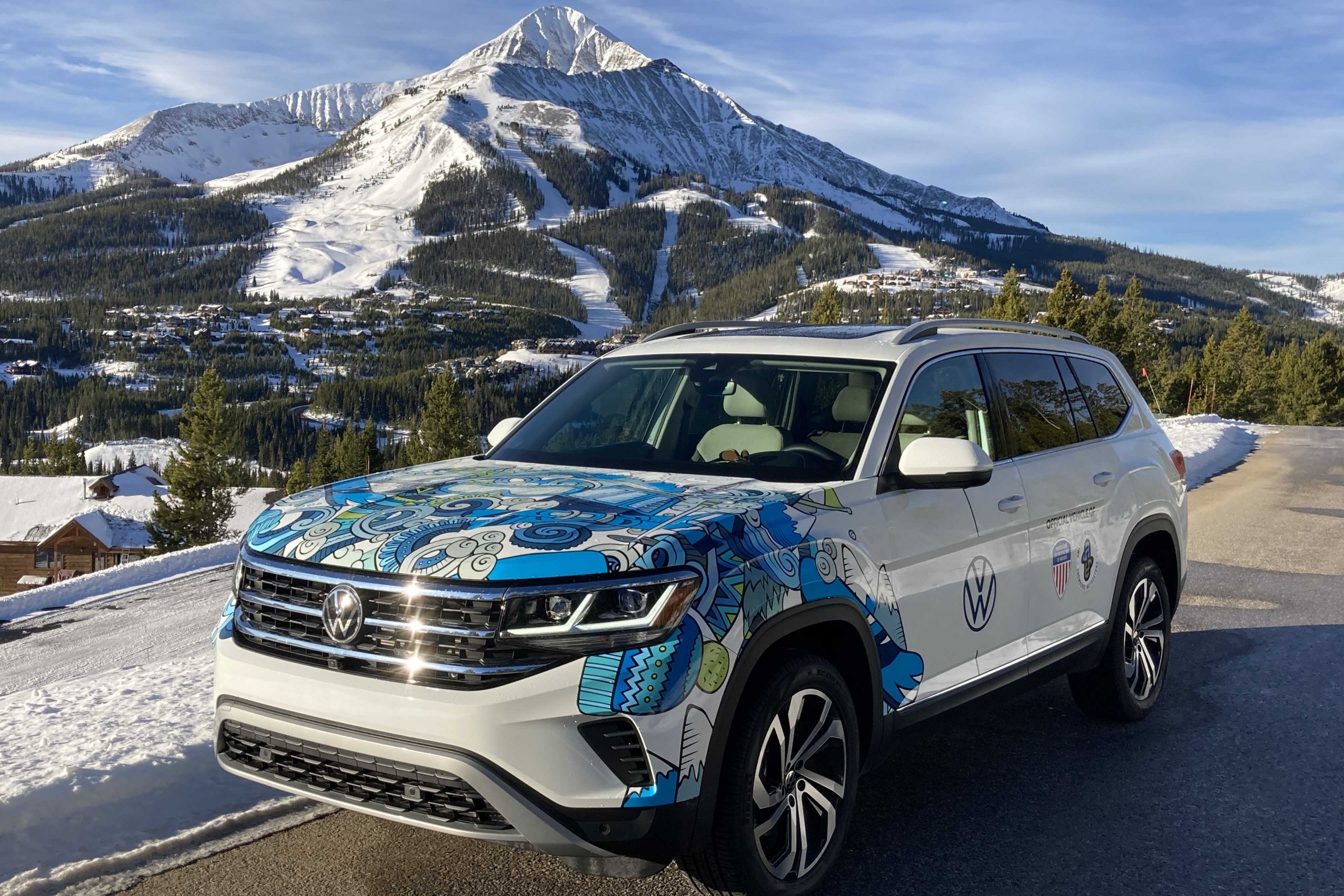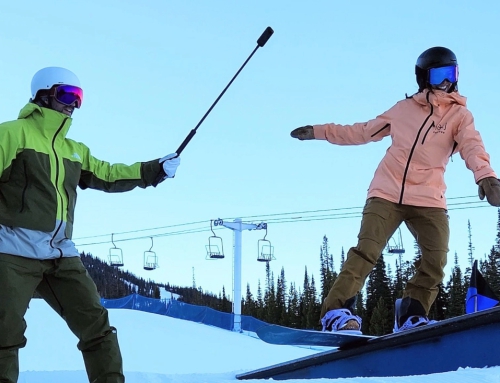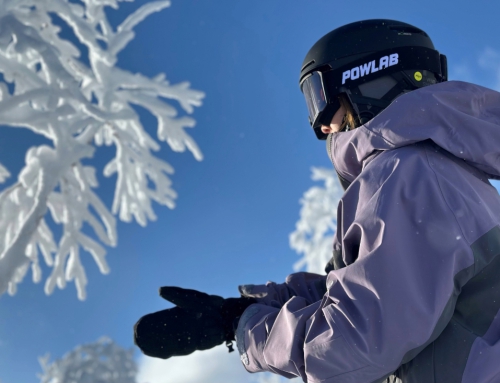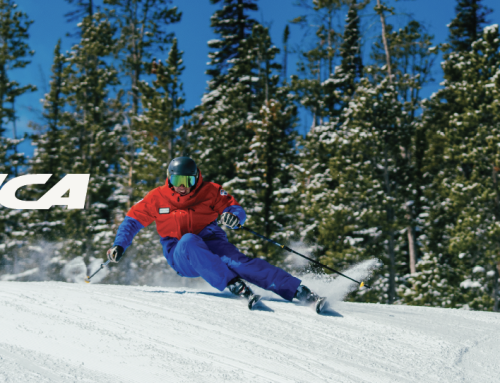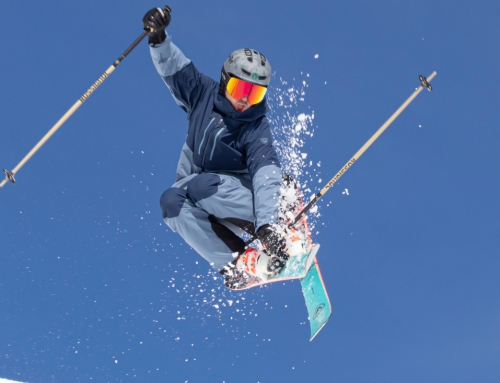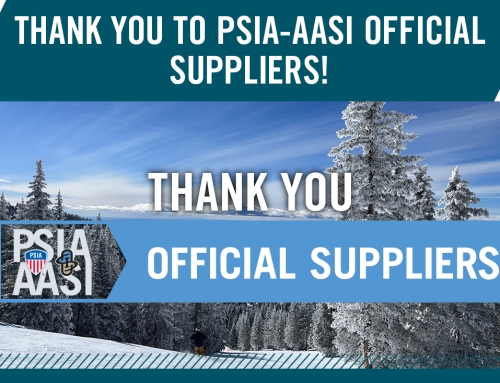Volkswagen Presents 6 Winter Driving Tips from Pro Driver Tanner Foust
PSIA-AASI Official Automotive Partner has timely tips to help professional instructors get to the slopes safely this season, courtesy of pro driver Tanner Foust, whose words of wisdom for any Volkswagen owner driving during the cold-weather months are: “Respect the conditions.”
As a professional racing driver for Volkswagen, and a stunt driver for film and television, he’s in a position to know. Among his many accomplishments, Tanner is a three-time U.S. champion in the sport of Rallycross and a two-time winner of the Formula Drift championship. He’s mastered the art of controlling cars through all types of slippery conditions, and in fact began his career as an ice driving instructor.
Fresh from a driving demonstration at the Taos Valley Ski Resort in Taos, N.M., here are Tanner’s six helpful tips on how to drive in winter conditions.
1. Let the technology assist you.
According to Tanner, if you stay within your vehicle’s limits, and avoid carrying too much speed into turns, onboard technology can help you tackle challenging road conditions. “Traction control is part of the Electronic Stability Control system in every modern Volkswagen,” he says. “If a tire starts to slip, the system automatically limits power to that tire to keep it gripping the road. You might not know it’s there, but it’s designed to help you.” While this rule applies whether you have a front-wheel-drive vehicle or one equipped with 4MOTION® all-wheel-drive, Tanner notes that 4MOTION® does offer the advantage of better low-speed acceleration, particularly on inclines. “That makes it a lot easier to get up that snowy road on the hill to grandma’s house.”
2. Have the right tires.
If you live in a region where temperatures regularly drop below 45 degrees Fahrenheit in winter months or where potentially difficult road conditions are common, it’s best to outfit your car with winter tires. This “helps give you an advantage for braking, accelerating and steering whenever you’re on a snow-covered road,” Tanner explains. Also note that as temperatures drop, so does tire pressure. Regularly check and adjust tire pressure to the recommended level for your vehicle.
3. Do one thing at a time.
“A car can either brake, turn or accelerate,” says Tanner. “When driving on a snow-covered road, because there’s such limited grip, it’s critical that you do only one of those things at a time.” Anything more than that, he explains, can overpower the grip in the tires and cause the car to skid. “You should brake in a straight line. When you need to turn, steer with your foot basically off the pedals, and wait until the wheel is almost straight before accelerating out of the turn.”
4. Take care to avoid skids.
Tanner says that there are two types of skids to avoid when making a turn on a snow-covered road: “If the back tires begin to slide to the outside of the turn, that’s a condition known as oversteer. If the front tires start to slide to the outside, that’s called understeer.” The best way to avoid either type of slide? Complete the braking process before turning, and enter corners with care.
5. Leave plenty of braking room.
Because tire grip is limited on a snowy road, the braking distance needed to come to a complete stop can be up to four times as long as it would be in dry conditions. “What this means,” says Tanner, “is that your following distance to the car in front of you needs to be at least four times as long.” Every modern Volkswagen is equipped with an Anti-lock Braking System (ABS). In an emergency stop, even on snow, “just push the brake hard,” he advises. “That buzzing sensation you feel under your foot is the ABS system working.”
6. Be prepared.
Planning ahead is the best way to help prepare for situations where your vehicle has gotten stuck, or the weather has deteriorated to the point where it’s not advisable to continue driving. Tanner says that for winter drives, especially when visiting areas outside cellular service, it’s essential to keep items like non-perishable food, bottled water and an extra set of warm clothes, along with a Roadside Assistance Kit and First Aid Kit, inside your vehicle. “This way,” he says, “you’ll be better prepared to weather the storm until help arrives.”
Beyond Tanner’s advice for winter driving, follow these bonus tips to keep your Volkswagen running in peak condition during cold weather. And don’t forget to schedule a cold-weather service appointment at your local Volkswagen dealer.

